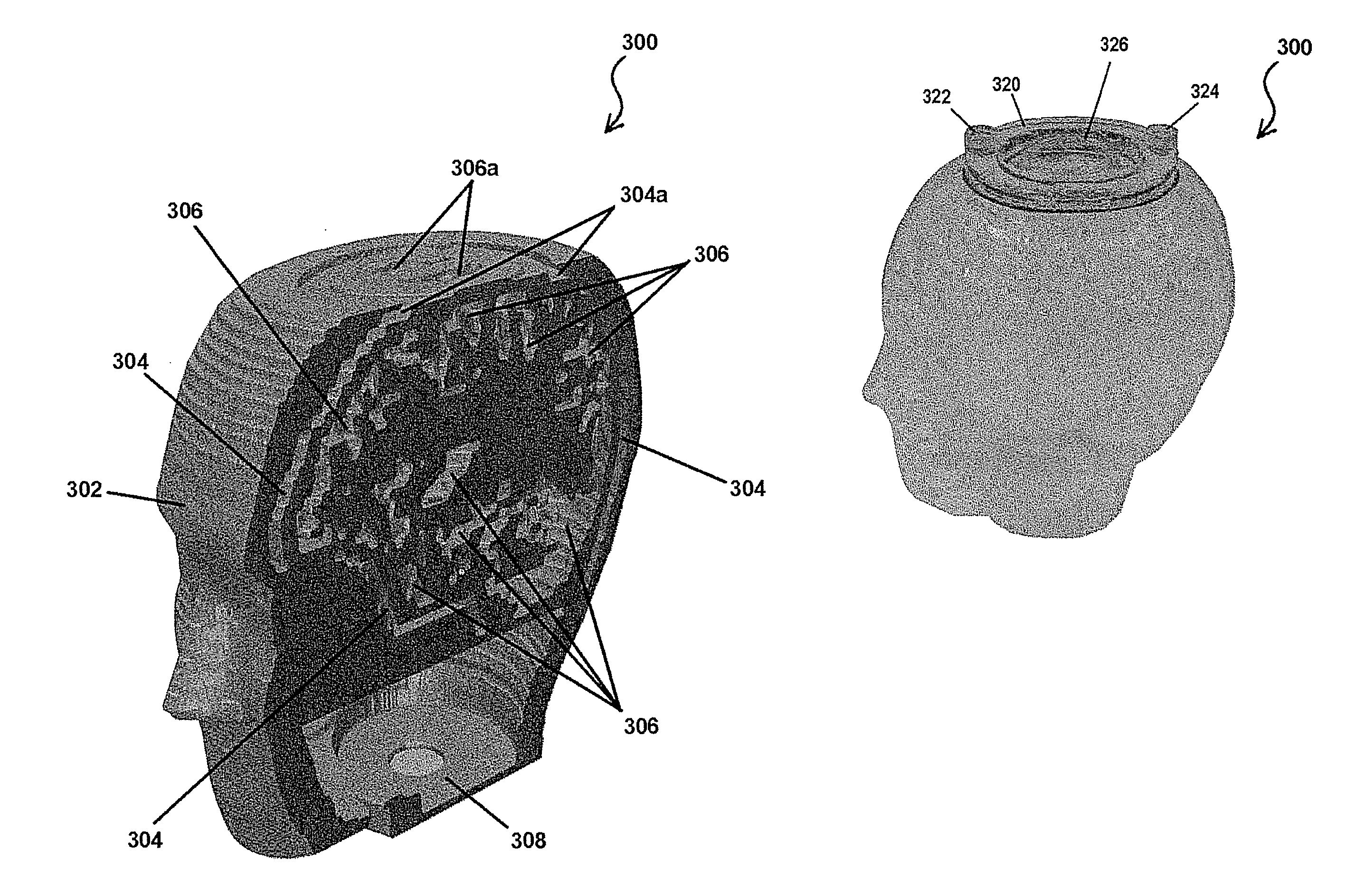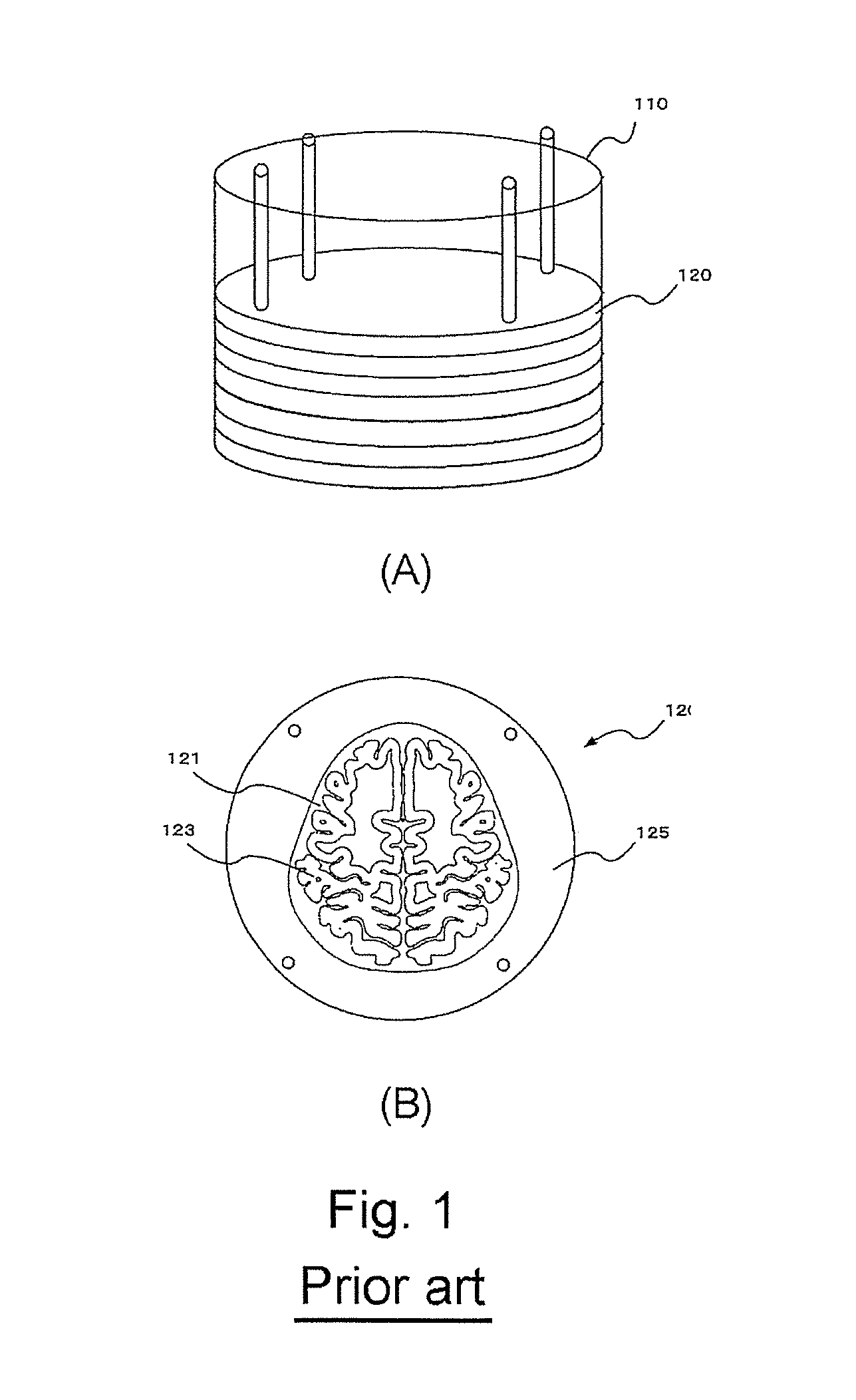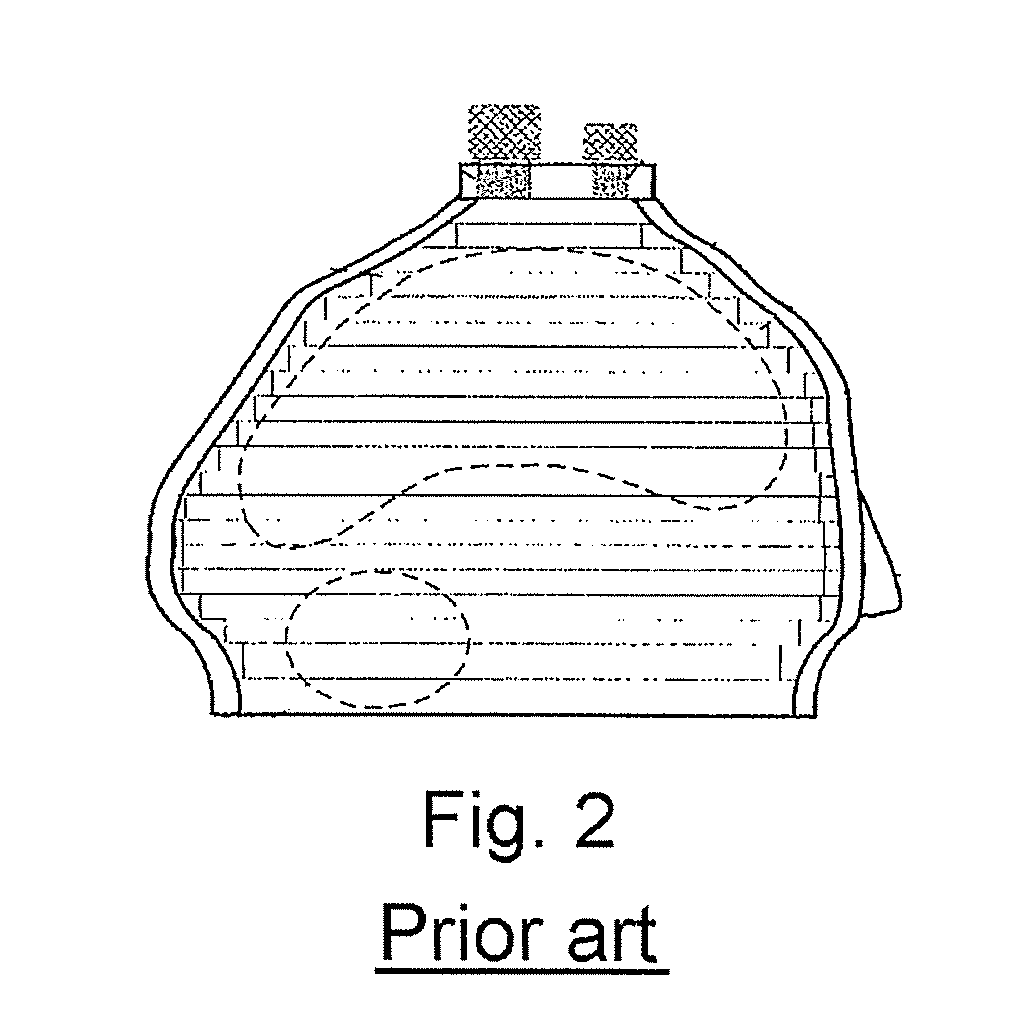Head model for brain-imaging device and technique for producing same
a brain-imaging device and head model technology, applied in the field of head models, can solve the problems of easy air trapped between slices, inability to perform hypothetical verification, so as to facilitate the operation of discharging air remaining from the injection of test solution, easy to confirm, and easy to remov
- Summary
- Abstract
- Description
- Claims
- Application Information
AI Technical Summary
Benefits of technology
Problems solved by technology
Method used
Image
Examples
Embodiment Construction
[0038]FIGS. 3A to 3C and FIGS. 4A and 4B are images for explaining one embodiment of the head model according to the present invention. FIG. 3A and FIG. 3B are perspective views of a head model 300 according to the present embodiment, viewed from the front and the rear, respectively, and FIG. 3C shows the same head model 300 in a transparent perspective view. FIG. 4A shows the head model 300 in a cross-sectional view (sagittal view). The head model 300 has a structure in which a cavity 304 resembling the shape of the skull and a cavity 306 resembling a specific region of the brain are formed inside a solid structure 302.
[0039]The structure 302 may be composed of, for example, acryl or ABS resin. The external appearance of the structure 302 is arbitrary, but as shown in FIG. 3A and FIG. 3C, it is preferably a shape resembling the outer surface shape of a human head, such as the shapes near the eyes and nose. Moreover, to make the measurements closer to measurements of an actual human...
PUM
| Property | Measurement | Unit |
|---|---|---|
| Fraction | aaaaa | aaaaa |
| Shape | aaaaa | aaaaa |
| Transparency | aaaaa | aaaaa |
Abstract
Description
Claims
Application Information
 Login to View More
Login to View More - R&D
- Intellectual Property
- Life Sciences
- Materials
- Tech Scout
- Unparalleled Data Quality
- Higher Quality Content
- 60% Fewer Hallucinations
Browse by: Latest US Patents, China's latest patents, Technical Efficacy Thesaurus, Application Domain, Technology Topic, Popular Technical Reports.
© 2025 PatSnap. All rights reserved.Legal|Privacy policy|Modern Slavery Act Transparency Statement|Sitemap|About US| Contact US: help@patsnap.com



